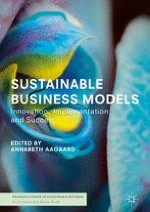This book provides a comprehensive exploration into the identification and development of sustainable business models as well as their implementation, management and evaluation. With ever-increasing pressure on organisations to respond to societal change and improve competition through sustainable business model innovation (SBMI), this book aims to contribute to the knowledge of their design and management. The chapters explore the role of partnerships, the Internet of Things and the circular economy, among other factors, in developing SBM and how SBMI is facilitated through ideation and in entrepreneurial settings. Providing new typologies, patterns and a framework to evaluate the level of sustainability of business models, this book critically reviews existing literature on the topic to examine the potential of SBMI in research and in practice. The contributing authors employ a number of case studies and case examples to illustrate the integration of sustainable business models throughout the value chain, and their influence on wider social, environmental and business activities.
